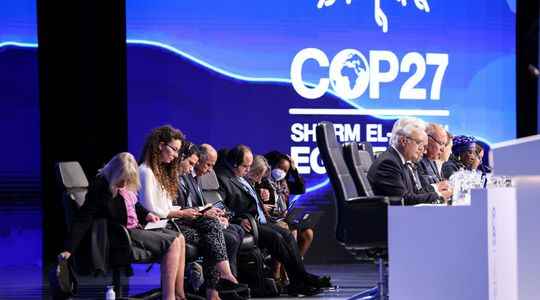Should we still fight to limit global warming to 1.5°C? In 2015, during COP21, the signatory states of the Paris agreement aligned themselves on a key concept: to keep global warming well “below 2°C” compared to the pre-industrial era and “pursue the efforts” to limit it to 1.5°C. They thus set the benchmark for climate ambition during international negotiations. Since then, however, this notion has constantly been called into question during major climate summits.
And seven years after the Paris agreement, COP27 was no exception. “It was not a surprise, some countries have slowed down discussions to make 1.5°C a central element of the negotiations”, underlines Lola Vallejo, director of the climate program at the Institute for Sustainable Development and International Relations.
Because to keep warming below this limit, it would be necessary to drastically limit the emissions of each country, in order to respect the carbon budget at our disposal. Thus, while 2,495 billion tonnes of CO2 have been released into the atmosphere since 1850, it would now be necessary not to reject more than 380 billion. At the current rate of emissions, that leaves us nine years before having to neutralize the CO2 impact in terms of net emissions. This alone could give us a 50% chance of keeping warming to 1.5°C. “China or India therefore see this limit as an obstacle to their development, just like Saudi Arabia, whose model is essentially based on fossil fuels. And at a time of the global energy crisis and the revival of fossil fuels like coal, it only exacerbated these positions,” adds Lola Vallejo.
A reaffirmed objective
Finally, and as often, it was after a bitter discussion that the objective of the Paris agreement had its place in the final text, in particular thanks to the discussions held during the G20 in Bali. But these new arguments for reducing climate ambition show how fragile this limit is. “Installing this objective in the negotiations took us a lot of time, we are barely talking about its implications and yet it is already being called into question”, laments Lola Vallejo. The specialist notably evokes a text signed by a group of activists advocating civil disobedience: Scientists Rebellion. More than 1,000 scientists now believe that we must “tell the truth”. “To continue to affirm publicly that it is always possible to limit global warming to 1.5°C is no longer acceptable” they judge, arguing that there is “no credible path towards limited warming ” at this level. A little later, it’s the front page of the influential British weekly The Economist which drove the point home by captioning “Say goodbye to 1.5°C”.
“Of course it is implausible, we can see that the current means are not up to the task of respecting this limit, but I do not think that abandoning this objective is mobilizing”, recriminates this specialist in climate negotiations. Refusing to give in to disarray, the majority of negotiators and scientists today continue to plead for the policies of the States to be aligned with the objective of the Paris agreement. “Abandoning this 1.5°C objective could open the door to abandoning any transformation policy considering that it’s screwed up. But every tenth of a degree counts”, insists Anne Bringault, program coordinator for the Climate Action network.
The figure itself is not insignificant. It was supported in 2009 in particular by the alliance of small island states which, threatened by rising sea levels, fear that their territorial integrity will decrease or even disappear. But in addition to a sharp rise in the level of the oceans, the risks generated by such a rise in the temperature of the planet are numerous. Loss of ice at the poles, destruction of certain marine and terrestrial ecosystems, and risks to the health and well-being of human populations are dependent on our ability to contain global warming. “Between 1.5 and 2°C, there are 55 million more people who will suffer from hunger in Africa”, emphasizes Anne Bringault.
Walk the talk
For the moment, States are struggling to match words with deeds. Because if the parties recognize the importance of maintaining a warming of 1.5°C, they do not specify the concrete means to achieve this, namely the exit from fossil fuels. “There was a deadlock during the discussions, when coal, oil and gas should be reduced very quickly. However, the latter two are not mentioned at all in the text”, relates Anne Bringault. According to observers at this COP, some countries, such as Russia and Saudi Arabia, lobbied hard for these terms not to appear in the final declaration. A signal that raises fears of difficulties to come during the next meetings. “When we know that the next COP is taking place in Dubai, we can be quite worried about the possible progress at COP28”.
For the moment, the commitments of the signatory countries are insufficient, and would not even make it possible to contain the rise in temperature to 2°C compared to the pre-industrial era. At the current rate, the world should warm up by 2.8°C in 2100. Worse, while the text signed last year at COP26 in Glasgow was supposed to make it possible to regularly raise the level of the States’ climate commitments, the agreement of Sharm el-Sheikh could have weakened them. “This COP has weakened the obligations for countries to present new and more ambitious commitments”, regretted Laurence Tubiana, architect of the Paris agreement of 2015.
